Elba, Corsica and Sardinia, Italy
Italy dangles like a Christmas stocking from the center of Western Europe, stuffed with overflowing treasures for all your senses. The topography of Italy varies from the heights of the Alps, to the breadth of great plains, to wonderful islands.
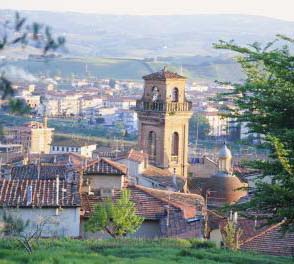 Excluding the islands, Italy is approximately 260,000 square km, which is roughly the size of Britain. But it is the islands that fascinate, and which we will explore; starting with Elba in the Tuscan Archipelago, then on to the French island of Corsica, and finally Sardinia, situated directly below Corsica.
Excluding the islands, Italy is approximately 260,000 square km, which is roughly the size of Britain. But it is the islands that fascinate, and which we will explore; starting with Elba in the Tuscan Archipelago, then on to the French island of Corsica, and finally Sardinia, situated directly below Corsica.
Located to the west of Italy, but close enough to have been inhabited since ancient times, Elba is the largest island of the Tuscan Archipelago, which consists of several islands scattered like jewels across the sea. Heavily forested, but sprinkled with granite outcroppings, Elba is a study of deep green and pink. Dominated by a chain of mountains, the tallest ones are to the West, with the highest peak being Monte Capanne.
Colonized since around 3000 BC, people were originally drawn to Elba for its wealth of metals. Started by the discovery of copper during the Copper Age, and continuing on through the Bronze Age, as the residents alloyed it into bronze. The copper was depleted just as the world entered the Iron Age. Good luck for Elba, the island also contained vast deposits of iron ore. When the steel mills on Elba were closed after World War II, tourism was developed as the new source of wealth. The picture of success, the 30,000 residents of Elba host upwards of 2,000,000 visitors on a yearly basis.
Portoferrio is the capital of Elba. Reigning, Duke Cosimo I, built the massive walls surrounding the city in the 16th Century. The other prominent structure in Portoferrio is the Grattacielo (“skyscraper”) which is one of the truly ugliest buildings, complete with peeling paint, that was built in the 1950’s. However, since it contains the tourist office and most modes of island transportation revolve around it, many people can not ignore it, even though they might like to!
No discussion of Elba would be complete without mentioning the fact that on May 4, 1814, Napoleonarrived at Portoferrio with 500 of his most loyal officers and soldiers, plus a British Commissioner to keep an eye on him. He proved to be a very adept governor, reorganizing the iron mines and starting the network of roads found on Elba today. Things seemed to be going along pretty well, that is, right up until he disappeared on February 20, 1815, much to the horror of his British watchdog. The “Hundred Days” had begun. Captured again after Waterloo, Napoleon would be banished to a much smaller, much gloomier, more distant island to keep him out of trouble. Most people visit his thoroughly depressing palace, the villa dei Mulini in Portoferrio, where he lived a rather Spartan life, as though he fully expected to be there only a short period of time!
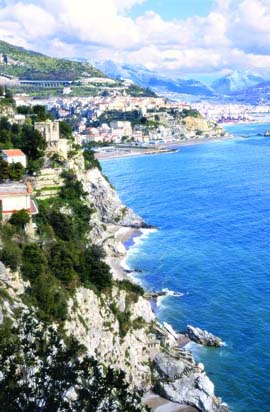 There is plenty to see and do on Elba, including a thermal spa at San Gowannii and the ruins of a Roman villa at Le Grotte. In western Elba lies Marciana, the oldest continually inhabited town on Elba. The Marciana Marina lies below the town, which is situated high on the slopes of Monte Capanne. Marciana is quite beautiful with its narrow streets, stone stairways and many archways. In the summer, a cable lift goes to the very summit of Monte Capanne. This vantage point offers stunning views of the Tuscan Archipelago, the mountains of Tuscany and south to Corsica.
There is plenty to see and do on Elba, including a thermal spa at San Gowannii and the ruins of a Roman villa at Le Grotte. In western Elba lies Marciana, the oldest continually inhabited town on Elba. The Marciana Marina lies below the town, which is situated high on the slopes of Monte Capanne. Marciana is quite beautiful with its narrow streets, stone stairways and many archways. In the summer, a cable lift goes to the very summit of Monte Capanne. This vantage point offers stunning views of the Tuscan Archipelago, the mountains of Tuscany and south to Corsica.
Corsica, best known to most people as the birthplace of Napoleon Bonaparte, has been conquered, fought over, revolted and re-taken so often that it is amazing that the national mental state is nothing less than schizophrenic. While it is likely that the island was inhabited as early as Paleolithic times, the skeletal remains of the Bonifacio Woman, dating from 6570 BC, is positive proof that it was inhabited by the Neolithic era. By the 6th Century BC, the Phocaean Greeks founded Alalia, at what is now called Aleria, on Corsica’s flat eastern plain. Two thousand years later, around 4000 BC, it would appear that the inhabitants succumbed to the romance of big stones. Various sites around the southwestern corner of the island still bear evidence of this period, with large upright slabs standing in the earth, and structures consisting of two large slabs supporting a large stone “roof”. Torri, or towers, constructed by the Torreens in approximately 1100 BC are also standing, seemingly indestructible, especially taking into account the later history of the island.
A seemingly endless parade of invaders ruled the island throughout the years. Napoleon, Corsican by birth, took over the jurisdiction of Corsica on behalf of the French government in 1796, after the English departed. His lone ambition was one of making Corsica truly French once and for all. To this end, he prohibited Corsicans from island administrative posts, on the grounds that they were untrustworthy. While it is French, it is Corsica first, and steps are being undertaken to grant it legislative authority unto itself. No need to worry though, the Euro now rules and credit cards are accepted, no matter who happens to be in power!
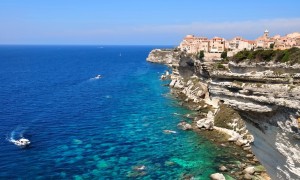 Extremely mountainous, Corsica seems to rise from the sea straight up into the clouds. For visitors, its main attraction is the environment, which is vigorously protected. In fact, over one third of the island is designated as national parkland. The Parc Naturel Regional de Corse (PNRC) has created, among other things, over 2000km of sign posted footpaths. It has encouraged the preservation of Hermann’s tortoise, the mouflon (a type of short fleeced sheep whose males are characterized by large horns), and is also responsible for the reintroduction of the Corsican red deer. Perhaps the best part of all of this is that while walking on Corsica, you can leave your snakebite kit at home, as there are no snakes here. That fact alone makes a trip to Corsica extremely inviting!
Extremely mountainous, Corsica seems to rise from the sea straight up into the clouds. For visitors, its main attraction is the environment, which is vigorously protected. In fact, over one third of the island is designated as national parkland. The Parc Naturel Regional de Corse (PNRC) has created, among other things, over 2000km of sign posted footpaths. It has encouraged the preservation of Hermann’s tortoise, the mouflon (a type of short fleeced sheep whose males are characterized by large horns), and is also responsible for the reintroduction of the Corsican red deer. Perhaps the best part of all of this is that while walking on Corsica, you can leave your snakebite kit at home, as there are no snakes here. That fact alone makes a trip to Corsica extremely inviting!
Cap Corse peninsula sticks out of the north end of Corsica like a sore thumb, and is a mere 12km south of Elba. Apart from Bonifacio, located on the extreme southern tip of the island, it is the only area within Corsica where the inhabitants have made a living by fishing. The most prominent feature on Cap Corse is the numerous watchtowers that the Banco di San Giorgio built in the 16th Century. Originally numbering 85, there are approximately 60 left, and the majority are on Cap Corse. Originally intended to protect the island from Saracen raiders, they also helped protect the island’s strategic and commercial interests from other European challengers. Ringing the island, with each one visible to the next, a system of signals enabled messages to circle the island within an hour.
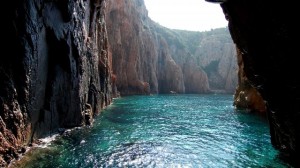 Further south, following the western coastline, is the Reserve Naturelle de Scandola, accessible only by water, best known for its large number of osprey pairs, which account for about 1/3 of the entire osprey population in the entire Mediterranean, and the many volcanic caves and faults. Another of its curiosities is a type of calcareous seaweed that is so hard that it forms pavements on the water’s surface.
Further south, following the western coastline, is the Reserve Naturelle de Scandola, accessible only by water, best known for its large number of osprey pairs, which account for about 1/3 of the entire osprey population in the entire Mediterranean, and the many volcanic caves and faults. Another of its curiosities is a type of calcareous seaweed that is so hard that it forms pavements on the water’s surface.
Continuing your journey along the coastline, you will reach Ajaccio, which is the largest town on Corsica and also the capital. Famous as the birthplace of Napoleon, it was Napoleon who decided in 1811 that Ajaccio would become the capital of Corsica, rather than Bastia, which had been the island’s capital and principal town up until that point. There is plenty to see and do in Ajaccio, with enough museums to keep the history buffs occupied for several hours.
Bonifacio is on the extreme southern tip of Corsica, resembling a cliff-top fairy tale city straight out of the pages of a child’s picture book. Bonifacio is built on two levels, with the citadel, filled with ancient buildings and twisting streets, up at cloud level. Appearing to spring from the sheer, chalky cliffs behind them, the walls barely seem to be able to hold the city in, away from the edge of the precipice on which they are perched. Below, the inlet retreats through the cliffs to form a large natural harbor, home to a bustling port. Protected from the wind and pounding sea by the cliffs that ring it, and protected from invaders due to the narrow opening into it, Bonifacio has one of the most beautiful harbors in the Western Med.
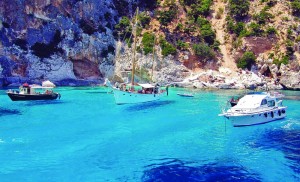 Leaving the Corsica and Napoleon behind, it is time to head south across the narrow Straits of Bonifacio to Sardinia, the final island which we shall explore. While unmistakably and unabashedly Italian, Sardinia is a universe unto itself. Lying about 120 miles to the west of Italy, it is almost that same distance from Tunisia. D.H. Lawrence described it as “lost between Europe and Africa and belonging to nowhere.” Possessing its own language and diverse customs, the Sardinians have remained fiercely independent throughout its turbulent history.
Leaving the Corsica and Napoleon behind, it is time to head south across the narrow Straits of Bonifacio to Sardinia, the final island which we shall explore. While unmistakably and unabashedly Italian, Sardinia is a universe unto itself. Lying about 120 miles to the west of Italy, it is almost that same distance from Tunisia. D.H. Lawrence described it as “lost between Europe and Africa and belonging to nowhere.” Possessing its own language and diverse customs, the Sardinians have remained fiercely independent throughout its turbulent history.
Sardinia’s early history is closely linked with the history of nearby Corsica and Elba. It appears that there were communities in the Paleolithic era, as the first traces of human settlement go back to before 6000 BC. Replaced around 4000 BC by an agricultural culture called the Bonu Ighinu, this society was named after the grotto near Mara where their most significant remains have been found. Around 1500 BC, a new group of settlers, the Nuragic people, arrived on the scene. They were obsessed with protecting themselves from invasion, and proceeded to build roughly 30,000 circular fortified dwellings, strategically located so each could see its neighbor. It would appear that this may be where the Banco di San Giorgo got the idea to build the watchtowers that ring Corsica! Today, about 7000 of these megalithic structures survive. The most important complex is Nuraghe Su Nuraxi, in Barumini, centered around a three-story tower. Among the best preserved are S. Antine, which also has a central three-story tower connecting to three, two-story watchtowers via walkways, and Nora, which is an extensive village complete with an amphitheater, forum, baths, temple and kasbah.
 Almost continuously occupied and ruled by outsiders, there was once-upon-a-time, a Kingdom of Sardinia! This was a result of the War of Spanish Succession, when Cagliari was bombarded by an English fleet and briefly occupied. In the ensuing negotiations, the island was ceded first to Austria, then according to the Treaty of London of 1718, the Kingdom of Sardinia was established. Of course, that was just too good to last, and the Kingdom came to an end with the unification of Italy in 1861. Treated for years like the proverbial red-headed stepchild of Italy, an attempt to offset this attitude was made in 1948, when Sardinia was granted autonomy, allowing the regional government direct control over many aspects of daily life.
Almost continuously occupied and ruled by outsiders, there was once-upon-a-time, a Kingdom of Sardinia! This was a result of the War of Spanish Succession, when Cagliari was bombarded by an English fleet and briefly occupied. In the ensuing negotiations, the island was ceded first to Austria, then according to the Treaty of London of 1718, the Kingdom of Sardinia was established. Of course, that was just too good to last, and the Kingdom came to an end with the unification of Italy in 1861. Treated for years like the proverbial red-headed stepchild of Italy, an attempt to offset this attitude was made in 1948, when Sardinia was granted autonomy, allowing the regional government direct control over many aspects of daily life.
The Maddalena archipelago is a cluster of seven larger islands and a sprinkling of smaller ones. Crystal clear waters and steady breezes are the signature highlights of the area, making it popular to the yachting crowd. Home to numerous regattas every year, there are many secluded bays and coves to explore for those who prefer to be far from the crowd. The water is always relatively calm, even with the breezes, thanks to the many islands, making it a favorite place for personal water sports.Porto Cervo is certainly on the “must do” list for any charter visiting Sardinia. It is the yachting hub of the Costa Smeralda, popularly known as the “millionaires playground”. Located on a narrow strip of land separating the gulfs of Cugnana and Arzachena, it is said to have been the brainchild of the Aga Khan Prince Karim IV. It is built to resemble a fishing village, only on a massive scale. Some call it sterile, others call it clean and discreet, but the one thing is that probably no one has ever said, “I wish I had not taken the time to visit Costa Smeralda!” Filled with the jet set types in the summer, it is an excellent place to people watch.
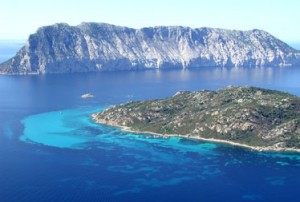 On down the eastern coast lie two small islands, Tavolara and Molara. Upon approach, they seem nothing less than forbidding, as they appear to be simply tall eruptions of rock, thrust up from the sea, which is, indeed what they are. But, close in, the crystal-clear water and tiny sand beaches welcome you to visit.
On down the eastern coast lie two small islands, Tavolara and Molara. Upon approach, they seem nothing less than forbidding, as they appear to be simply tall eruptions of rock, thrust up from the sea, which is, indeed what they are. But, close in, the crystal-clear water and tiny sand beaches welcome you to visit.
Cagliari is at the southern end of Sardinia, situated in the broad curve of the Gulf of Cagliari, and is backed by lagoon and surrounded by an imposing ring of medieval walls. The island’s capital since Roman times, littered with 2000 years of history, is also Sardinia’s busiest port. Wandering around Cagliari is best done on foot, and the four quarters that you will want to visit are all close by. The areas of Stampace and Villanova are known for their important religious monuments and old churches. The old citadel, Castello, is famous for its flamboyant cathedral and the best museums. The Marina quarter is home to most of the shops and restaurants. The arcades of Via Roma are often regarded as the best to sit with an ice cream and a cup of coffee; viewing the port and watching the people go by. This would seem to be the perfect way to end your Italy yacht charter before catching your flight home. Or maybe you should just skip the flight and continue on up the west coast of Sardinia, or head southeast to Sicily or anyplace else… but maybe that will all have to wait until next time!
ITINERARY
 Day 1: You will meet your floating holiday aboard Viola at Punta Ala, which is located on the coast of Tuscany. Once your luggage is safely stowed and you have been properly introduced to yacht and crew, we will slip the dock lines off and have a short, comfortable sail to Giglio, one of the smaller islands of the Tuscan Archipelago. Boasting superb scenery and abundant bird life, there are three tiny villages on Giglio, including Giglio Castello, a medieval town which is well worth exploring.
Day 1: You will meet your floating holiday aboard Viola at Punta Ala, which is located on the coast of Tuscany. Once your luggage is safely stowed and you have been properly introduced to yacht and crew, we will slip the dock lines off and have a short, comfortable sail to Giglio, one of the smaller islands of the Tuscan Archipelago. Boasting superb scenery and abundant bird life, there are three tiny villages on Giglio, including Giglio Castello, a medieval town which is well worth exploring.
Day 2: After a leisurely breakfast, we will head northwest to Elba. Though best known for the famous prisoner it was home to for a very short time, Napoleon Bonaparte, the scenery with its spectacular mountains and numerous beaches are what draw over two million visitors to this island every year. You will want to try some Aleatico or Moscato, Elban wines which are two of Tuscany’s best!
Day 3: Leaving the hustle and bustle of Elba behind, we again set sail toward the northwest, soon reaching our destination of the island of Capraia. This lovely island was once used as a penal colony, but the attraction the many Roman ruins and the vistas of the stunning cliffs makes it a popular destination for us to visit.
Day 4: You will probably awake early with the excitement of the day enticing you from your bed. Today we take a longer sail, leaving Italy behind and heading to France. Well, Corsica, which is French, none the less! Approaching Corsica from the north, we will sail down the coast of the Cape Corse penisula, dotted with tiny fishing ports nestled between maquis-covered headlands. Our destination for the day is St. Florent, located on the southwest side.
Day 5: Lingering to enjoy the beautiful bay at St. Florent and its magnificent beach, you are eager to sail on to Calvi, further on down the coast. A thriving little town, it is guarded by two giants: the citadel and Monte Cinto. It closely resembles many of the smaller towns along the French Riviera, and therefore often exhibits a liveliness that might not be evident any where else on Corsica!
Day 6: A beautiful day for a lovely sail. Today we will sail back up and around Cape Corse, to Bastia, located on the southeast side of the peninsula. The leading commercial town on Corsica, Bastia is a fun place to explore, with its narrow streets and odd byways. Hiking around Terra Vecchia, the oldest section of the city, or Terra Nova with its buildings sporting ochre, red, yellow and green facades is a grand way to work up a thirst that you can slake, sitting at a café by the Place St. Nicolas.
Day 7: A quiet breakfast, reflecting on the sights you have embraced for the past week. Then it is time to leave Bastia behind for a lovely sail back to Punta Ala. You return, safe, sound, relaxed and refreshed. This was the sailing holiday you have always dreamed of: unhurried, but varied enough to make you eager to return next year…for two weeks!
Contact Us Today
Call or text now: +1 954-632-3555
Email: info@allyachtsworldwide.com
